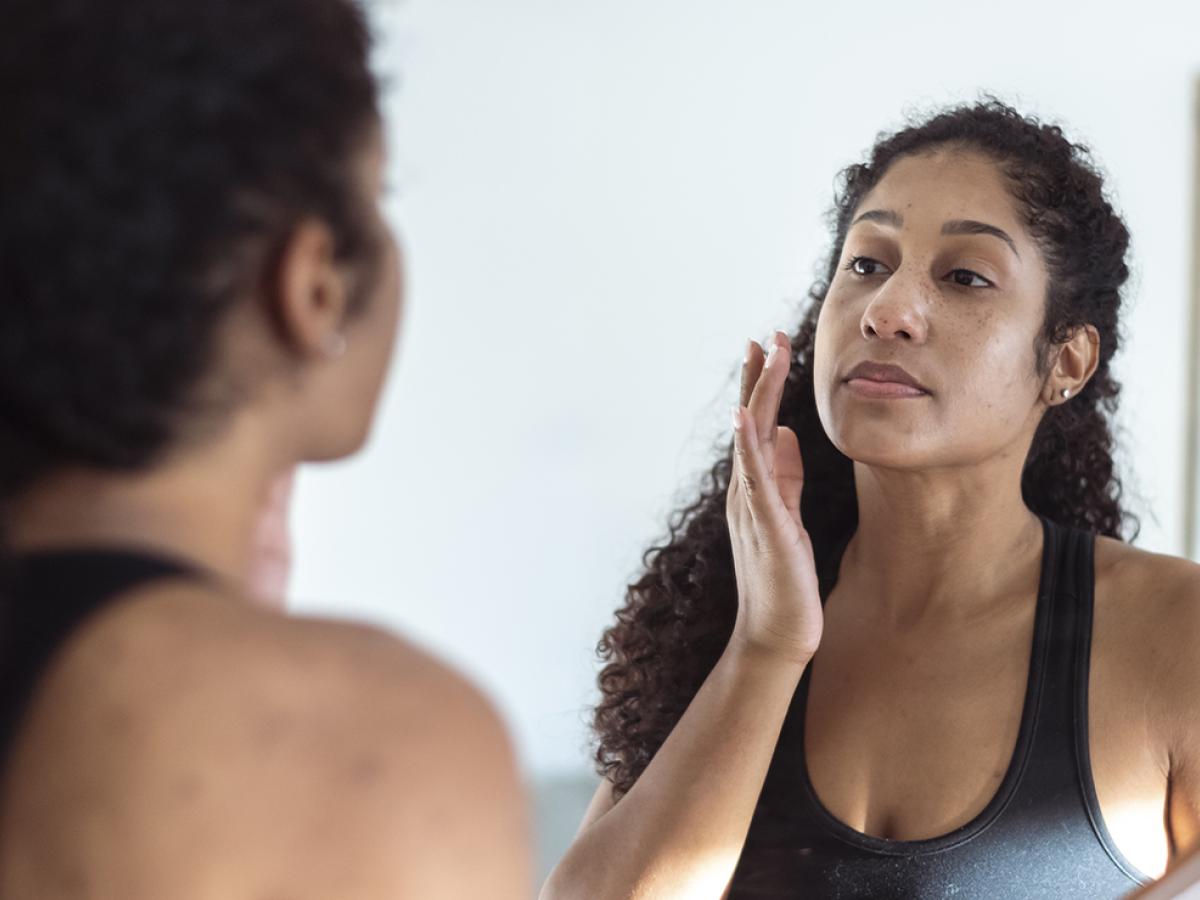February 20, 2023

Skin is the largest organ in your body. It requires tender loving care to stay healthy and look its best. But different skin tones have unique considerations. Your skin’s color —how much melanin (pigment) it has — determines how it reacts to the sun and common skin issues.

“The increased melanin in skin of color can make managing common skin conditions more challenging,” says Nkanyezi Ferguson, MD, MU Health Care dermatologist. “But if you know how to avoid and manage dermatology issues in skin of color, you can sidestep those issues.”
Common Skin Conditions for People of Color
All skin types and colors face challenges that can leave them irritated and inflamed. But some common skin problems may disproportionately affect people who have more melanin in the skin and cause side effects long after the inflammation subsides.
Common skin conditions in skin of color include:
Sun Damage
Melanin protects the skin from the sun — the more melanin your skin contains, the more protection you have. But the upper limit of that protection is only about SPF 13. So no amount of melanin offers complete protection from the sun’s harmful ultraviolet (UV) rays. In fact, a study of over 30,000 adults in the United States showed that approximately 13% of non-Hispanic Black people and 30% of Hispanic people experienced sunburn in the prior year.
Although skin cancer is uncommon among people of color, when it occurs it’s usually discovered at an advanced stage, according to Dr. Ferguson. But cancer isn’t the only skin disorder caused by UV damage. It can cause skin discoloration and premature aging (photoaging). So wearing sun protection is important for everyone.
“Select the type of sunscreen that’s going to be effective,” Dr. Ferguson says, adding that the American Academy of Dermatology recommends using SPF 30 or higher. “Patients of color can also look for tinted sunscreen or transparent sunscreens that have nano zinc oxide or titanium dioxide that will be cosmetically appealing.” Other options for sun protection include long clothes, hats and shade.
Hyperpigmentation (Dark Patches)
Skin issues, such as acne and dryness, can stress the skin and cause an inflammatory response. Melanin-rich skin reacts to that inflammation by depositing pigment in the surrounding area, which darkens the skin in places. This condition is called post-inflammatory hyperpigmentation (PIH).
“PIH is a common reaction in skin of color,” Dr. Ferguson says. “The dark marks can remain long after the skin has been inflamed.”
Dark patches can last weeks or months following everyday skin stressors such as:
- Acne or psoriasis
- Hormonal changes which may occur with pregnancy
- Irritation from skin or hair care products
- Wounds caused by insect bites, cuts or burns
The best way to treat PIH is to treat the cause. But any dark spots that do appear will usually fade with time. Patches just a few shades darker than your skin tone may take 6 to 12 months to fade; deeper marks can take years. To speed up the process, wear sunscreen faithfully because sunlight can cause PIH to darken further. You can also speak with a dermatologist about other options including topical treatments, prescription medications and cosmetic procedures.
Hypopigmentation (Light Spots)
Lighter spots on the skin happen when the skin makes less melanin. It can happen to any skin type but tends to be more noticeable in darker skin tones. Your skin might produce less pigment when you:
- Develop a skin condition, such as psoriasis, eczema
- Have a cosmetic procedure, such as laser treatments
- Injure your skin or get a bug bite
- Use certain topical medications
Like hyperpigmentation, it’s best to treat the underlying cause. Once a bug bite heals or you stop using a particular medication, your body will begin to make pigment in that area again. While it heals, protect the area from the sun so that the melanin production doesn’t increase too rapidly — which might cause dark spots instead.
Dry Skin
Skin of color may be prone to dryness. Because dryness can lead to redness and inflammation, it’s essential to keep skin of color adequately hydrated.
“We know that hot, long showers and winter weather can dry skin out,” Dr. Ferguson says. “Patients prone to dry skin may need to moisturize their skin year-round and avoid drying products.”
The challenge is finding the balance that adds moisture without clogging pores. Clogged pores can cause acne that may lead to inflammation. Dr. Ferguson recommends choosing a thicker moisturizing cream for your body but sticking to lighter moisturizers for the face.
Razor Bumps
Razor bumps tend to occur in the beard or chin area whenever there is a curly hair pattern, says Dr. Ferguson. “The hair curls back, pierces the skin and causes inflammation. Preventing it is key.”
She recommends:
- Applying a soothing shaving cream
- Avoiding a close shave by using electric clippers and leaving hair at least half-millimeter in length
- Trying not to pull or stretch the skin too much while shaving
- Shaving in one pass with a soft stroke in the direction of hair growth
You can avoid the issue of razor bumps with epilation (hair removal through an electrical device) or laser hair removal, but you should consult your dermatologist to ensure that a laser that is safe for darker skin types is being used.
Finding Care for Skin of Color
Skin color varies widely across races and ethnicities. And just as you wouldn’t care for thick, curly hair the same way you’d care for thin, straight hair, different skin types may require personalized dermatological care.
“Dermatologists are well-equipped to care for patients of color,” Dr. Ferguson says. “There’s a lot of treatments available to help manage every type of skin. But seeking care early, to catch issues early, is the most important treatment. We want to minimize those side effects that can occur and be psychologically distressing.”
Next Steps and Useful Resources
- Want to speak with a dermatologist? Find one today.

